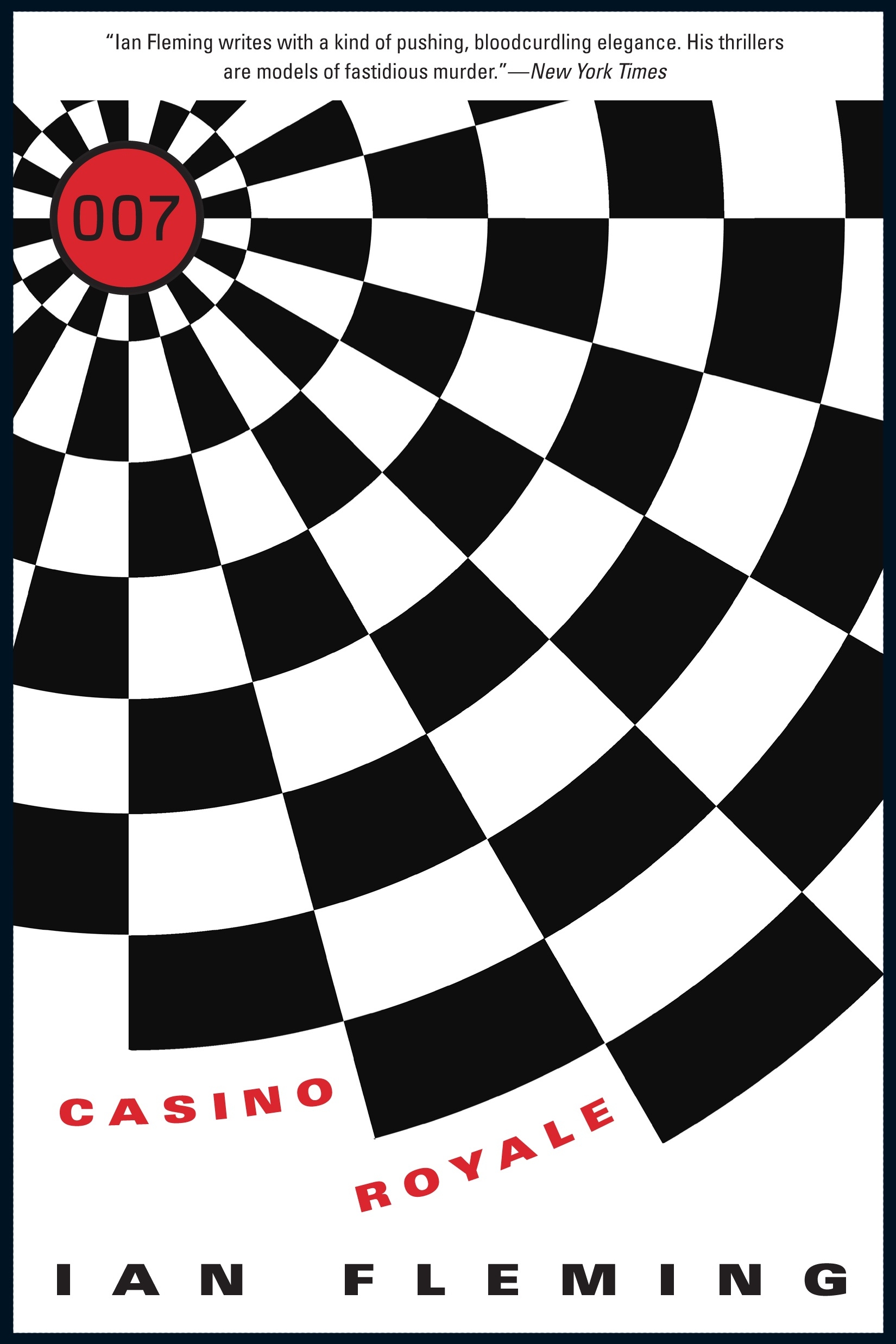Casino Royale was written by Ian Fleming and published in 1953. It was the first James Bond novel and led eventually to a massive franchise including dozens of books, films and games.
Warning: Major spoilers are blacked out like this [blackout]secret[/blackout]. To view them, just select/highlight them.

Casino Royale Public. Counter Strike 1.6 Casino Royale ® Public IP adresa: 95.156.230.142:27017 Veliki broj nagrada svaki mesec! Steam igracima free VIP. When Daniel Craig became the new James Bond in Casino Royale in 2006, it was not without public disapproval. Blonder, younger, and often thought of as less sophisticated the actor followed in the footsteps of the much-loved Pierce Brosnan. Director Martin.

Casino Royale: Logline
In 1950s France, a British spy tries to bankrupt a corrupt Soviet agent at the card table. When the plan succeeds at terrible cost, he must decide between love and duty.
Casino Royale: Plot Summary
Casino Royale opens with James Bond gambling at the Royale-Les-Eaux casino in France. Amongst the gamblers is Le Chiffre, who is a Soviet agent.
The story then flashes back to a briefing by M, the head of the British Secret Service. Le Chiffre controls a trade union for the Soviets but has stolen union money and invested it disastrously. Now his financial position is desperate and his only hope is to stake all his remaining capital on a big win at the casino. M plans to stop this and bankrupt le Chiffre, destroying Soviet influence in the trade union.
Bond is M’s chosen man to execute the plan, as he is one of the Service’s best gamblers,
Vesper Lynd is sent from headquarters to improve Bond’s cover. A French agent, Rene Mathis, and Felix Leiter of the CIA are also in position. Mathis warns Bond that the Soviets have blown his cover and he can expect resistance.
Two assassins make a botched attack on Bond, but only succeed in killing themselves by accident.
Bond and Le Chiffre confront each over the card table. Le Chiffre’s henchmen attempt to forcibly remove Bond from the game but are foiled.
Bond appears to have failed in his mission when Le Chiffre cleans him out of funds. However, Le Chiffre keeps playing, Leiter provides Bond with more funds, his luck turns and Le Chiffre is finally bankrupted.
Desperate to recover the money Bond has won from him, Le Chiffre kidnaps Vesper. Bond gives chase…
…but[blackout] is captured. Le Chiffre tortures Bond in an attempt to make him divulge the location of the money.[/blackout]
A Soviet [blackout]assassin bursts in and kills Le Chiffre and his men. The assassin does not kill Bond, saying that he has no orders to do so. Instead he carves the Russian for “spy” into Bond’s hand.[/blackout]
Bond [blackout]spends months in hospital recovering from the torture and thinks of resigning from the Secret Service. Mathis talks Bond out of his half-hearted doubts, and fully recovered, Bond is granted leave.[/blackout]
Bond and Vesper [blackout]go on holiday together and become lovers. Bond proposes to Vesper several times, but she starts to act strangely. He is confused and angry with her. After one last night together, Vesper commits suicide. Bond learns from her suicide note that she had been blackmailed into becoming a Soviet double-agent and felt that there was no way out for her.[/blackout]
Bond’s [blackout]grief at Vesper’s death is soon replaced with anger, shame at the sophistry of his doubts about the ethics of his Secret Service work and determination to oppose the Soviets.[/blackout]
Casino Royale: Alternative Cover


An unusual cover for me, not my usual minimalist style, but the playing card reminded me of Vesper and I liked the way the ‘Y’ in ‘Royale’ looks a bit like a cocktail glass.
Casino Royale: Analysis
Casino Royalehas what can only be described as an unusual plot structure (technically it is a Hybrid, see Spy Novel Plots).
It has three immense set pieces. The rest of the plot merely serves to move the characters between the highlights as functionally as possible, as the author later acknowledged:
There are three strong incidents in the book which carry it along and they are all based on fact. I extracted them from my wartime memories of the Naval Intelligence Division of the Admiralty, dolled them up, attached a hero, a villain and a heroine, and there was the book.
The heart of the book is the first of the major set pieces, Bond and Le Chiffre’s confrontation over the card table. There is a detailed description of the card game Baccarat and Bond’s battle to beat Le Chiffre at it. This is by far the best section of the novel.
The second set piece confrontation is Le Chiffre’s [blackout]torture of Bond as he attempts to make him divulge the location of the money[/blackout]. Bond does not escape through his own actions but [blackout]is rescued after Le Chiffre’s Soviet employers arrive and murder everyone except Bond.[/blackout] At this point, the main plot is effectively concluded, with a quarter of the book still to go.
Bond’s affair with Vesper takes up the last quarter of the book. This doomed romance seems like a different novel to the rest of the story. It is humanising in its own way, although Bond exhibits the chauvinism and patronising attitudes of his time (as with The Riddle of the Sands,The Thirty-Nine Steps,and The Great Impersonation, ‘allowances’ must be made for the attitudes of a bygone time).
The final twist, and Bond’s bitter response to it, sets his character up for the rest of the franchise.
This structure accounts for the unevenness of the novel, with the three set pieces highly effective and the intervening chapters serviceable at best. Much of it appears in essence to be padding, with Fleming indulging in various digressions such as the farcical and irrelevant botched assassination and lengthy descriptions of meals.
Also, the book just isn’t very well written. Fleming’s writing style is often described as “journalistic”, and the long descriptive passages are certainly that, but the prose is laboured, and the dialogue ridiculous at times.
Fleming’s writing does improve dramatically in the later books, becoming adequate in From Russia With Love onwards. Fleming was a big believer in writing fast and not looking back, and it shows in his novels. With some exceptions, the plots make little sense taken as a whole, relying on the set-piece action scenes to sweep the reader along.
Casino Royale: My Verdict
A curious book. Poorly written, oddly structured, but with some great scenes. It would be a shame for any spy-thriller fan to miss out on it. The electrifying set-piece scenes more than make up for its faults.
Casino Royale: The Movies
There have been three adaptations of Casino Royale, one television version and two movies.
1954: Television
The television version, was made by US broadcaster CBS only a year after the novel was first published and before Ian Fleming or Bond were famous. It makes Bond (played by Barry Nelson) into an American agent and changes the other characters (Lynda Christian, pictured above, plays ‘Valerie Mathis’, the Vesper role). Nelson was miscast, the screenplay was unexceptional and it was swiftly forgotten.
The main legacy of this first version of Casino Royale was that CBS, who thought the Bond character could support a television series, asked Ian Fleming for more story outlines. Although these outlines were never filmed, they eventually became the short stories released as For Your Eyes Only. The other result was that the film rights for Casino Royale were not sold to Harry Saltzman and EON productions, and so Casino Royale was not filmed as part of the main sequence of Sean Connery/Roger Moore Bond movies.
1967: The Comedy Version
After the Sean Connery films ignited the James Bond phenomena, attempts were made to get Casino Royale filmed as part of the franchise. These fell through and eventually, in 1967, Casino Royale was remade outside the main sequence. Feeling that a serious film could not compete with Sean Connery’s Bond, the producers of the 1967 version of Casino Royale decided to make it as a comedy. It is generally regarded as a dismal failure.
2006: The Reboot
Decades later, after several mergers and deals, EON finally gained the rights to Casino Royale and decided to use it for the reboot of James Bond. The 2006 Casino Royale stared Daniel Craig as James Bond and Eva Green as Vesper Lynd. It was one of the most successful Bond films ever, both critically and commercially, and Daniel Craig and Eva Green were both praised for their acting. Two of the core scenes of the novel occur during the second half of the movie: the confrontation over the card table and the torture scene. The ending is thematically similar to the book but much more action-packed and visual.
Interestingly, the parts of the film that really work are the ones inspired by the novel. The first half, which is an origin story for Bond unrelated to the novel, is much more formulaic. The chase in the airport in particular could have been taken from a Roger Moore Bond movie.
That the three highlights of the novel still work half a century later in a different medium shows how powerful they are.
Want to read or watch it?
Here’s the trailer for the 2006 film:
The novel of Casino Royale is available on US Amazon here, and UK Amazon here.
The 2006 film is available on US Amazon here, and UK Amazon here.
A Kill in the Morning
If you like James Bond then you’ll love my novel A Kill in the Morning, which SFF World described as “an action-packed romp that Ian Fleming would be proud of.”
You can read the opening here: The first two chapters of A Kill in the Morning.
If you’d like to buy A Kill in the Morning then:
- In the UK: A Kill in the Morning on Amazon UK, although the novel is also available in bookshops.
- In the USA: A Kill in the Morning on Amazon USA.
Agree? Disagree?
If you’d like to discuss anything in my Casino Royale review, please email me. Otherwise, please feel free to share it using the buttons below.
More Articles
Roulette was first played in France back in the 17th century. It is now one of the most popular European gambling games and Monte Carlo in Monaco is a well known and famous casino centre for playing roulette.
Roulette straight-up bet
Roulette straight-up bet or single number bet. Pays 35 to 1
Roulette split bet
A two-number bet, called split bet. Pays 17 to 1. (Place bet on the line between 2 numbers)
.jpg)
Daniel Craig Casino Royale
Roulette street bet
A three-number bet, called street bet, pays 11 to 1.
Roulette square bet
A four-number bet, called Square bet and corner bet. Pays 8 to 1
Roulette Line bets
Six numbers bet Line Bet. Pays 5 to 1
Roulette Low or High Bet
1 to 18 = Low and 19 to 36 = High. Pays 1 to 1.
Roulette Black or Red
Black or Red bet. Pays 1 to 1
Roulette Odd or Even
Casino Royale France Game
Odd and Even bet. Pays 1 to 1
Roulette Collum Bet
12 number bets. The above example is the 3rd collum. Pays 2 to 1
Roulette Dozens Bet
Casino Royale France 2
Another 12 number bet. The above example is 1st Dozen. Pays 2 to 1
Casino Royale Sur France 2
0 is neither Black or Red, Odd or Even, Low or High, Dozen and Collum therefore if 0 is the winning number then all outside bets lose.
